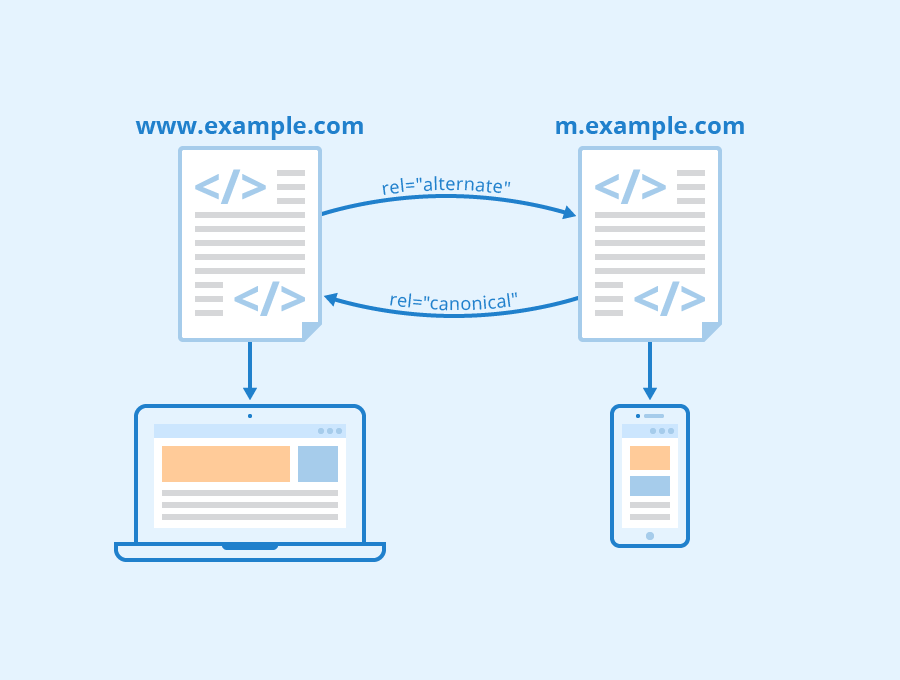Building a Sustainable Business Model in a Changing Economy
For New Zealand entrepreneurs and small business owners, navigating today’s economic landscape feels like sailing in constantly shifting winds. Change isn’t just happening; it’s accelerating, driven by technological leaps, evolving customer expectations, and a growing awareness of our collective environmental and social responsibilities. Building a business that lasts requires more than just chasing short-term profits. It demands a sustainable business model – one rooted in resilience, adaptability, and a clear-eyed view of the future. The global pandemic served as a stark reminder, accelerating trends already in motion and forcing many of us to fundamentally rethink how we operate, as noted in Harvard Business Review. This isn’t about mere survival, especially with recent data showing sales declines for many NZ small businesses (NZBusiness Magazine); it’s about designing a business that can thrive, adapt, and contribute positively, regardless of the economic weather in Aotearoa.
Why sustainability matters now more than ever
The ground beneath our feet is constantly moving. Technological advancements like Artificial Intelligence (AI) and automation are reshaping industries at an unprecedented pace, as highlighted by The Business & Financial Times. Simultaneously, customers increasingly demand personalised experiences and expect businesses to demonstrate genuine social and environmental responsibility. We’re operating in what some analysts call a ‘winner-take-all’ economy, where simply being average isn’t enough to guarantee long-term success. As insights from McKinsey suggest, the most successful companies are those constantly experimenting and innovating their operating models. This environment demands a broader definition of ‘sustainability’. It’s not just about being ‘green’; it encompasses building a commercially viable operation designed for long-term resilience, considering the needs of all stakeholders (employees, customers, community, planet), and being transparent about your impact. It’s about actively future-proofing your organisation against inevitable shocks and changes, creating a model that endures because it creates value responsibly.
Key components of a sustainable and resilient model
Creating a truly sustainable and resilient business model isn’t about focusing on one single element. Instead, it requires building strength across several interconnected pillars. These pillars support each other, creating a robust structure capable of weathering storms and adapting to new opportunities. Let’s explore the foundational elements essential for New Zealand businesses aiming for long-term success in this dynamic environment.
Strategic foresight and adaptability
Reacting to change is necessary, but proactively anticipating it is where true strategic advantage lies. Gone are the days when a static five-year plan was sufficient. Today, we need dynamic strategies built on foresight. A powerful tool for this is scenario planning – a structured way to imagine different potential futures and develop strategies robust enough to succeed across various possibilities. Think asking simple questions like, ‘What if our main supplier doubles prices?’ or ‘What if demand for our core service drops 20%?’ As Peter Scoblic highlights in his work discussed on the HBR IdeaCast, this involves institutionalising imagination and engaging in a continuous cycle of envisioning the future and acting in the present. It’s about developing strategic agility, the capacity to manage evolving circumstances effectively, even if it means deviating from core activities, a concept also emphasised by frameworks like BSI’s Organizational Resilience model. Staying informed about political, economic, social, technological, and environmental trends is crucial for anticipating shifts and adapting proactively, something essential for navigating NZ’s interconnected global economy.
Integrating environmental and social responsibility
Sustainability in the 21st century intrinsically links economic viability with environmental stewardship and social equity. Increasingly, Environmental, Social, and Governance (ESG) factors – essentially how a company performs as a steward of nature, manages relationships with stakeholders like employees and communities, and runs itself ethically – are not just ‘nice-to-haves’ but critical components influencing investment, customer loyalty, and brand reputation, as detailed by the University of Leeds. This often means shifting from traditional linear ‘take-make-dispose’ models towards more circular approaches, where resources are reused, repaired, or repurposed instead of simply being thrown away. Businesses can explore models focused on delivering functionality rather than just selling products (like a tool library renting equipment instead of selling it), or creating value from what was previously considered waste. The success of Kiwi businesses like Rescued Kitchen, which thrives by upcycling food waste into new products, demonstrates the market potential of integrating sustainability at the core. For NZ businesses, often trading on a ‘clean green’ image and the principles of Kaitiakitanga (guardianship), integrating genuine environmental and social responsibility resonates strongly with both domestic and international customers.
Operational resilience and continuity
A sustainable business must be able to withstand disruptions. Operational resilience is the bedrock of this capability – defined by regulators like the Financial Markets Authority (FMA) as the ability to deliver critical operations through disruptions. These disruptions can range from cyberattacks and technology failures to supply chain breakdowns or natural disasters, a significant consideration in New Zealand. Building resilience involves strong governance, a deep understanding of potential risks through regular assessment, robust management of third-party dependencies (like key suppliers), and strong cyber defences. For small businesses, practical steps are crucial. Research from MBIE highlights a gap between perceived and actual resilience among NZ SMEs, often because basic measures like adequate insurance or robust data backup aren’t in place. Implementing solid continuity and contingency plans, including secure off-site data backup (for customer lists, process manuals, not just financials) and clear communication protocols for emergencies, is fundamental.
Leveraging data and technology strategically
In the digital age, data and technology are no longer just support functions; they are strategic assets crucial for building a sustainable competitive advantage. Businesses that effectively harness data analytics, AI, and digital tools can make smarter decisions, understand their customers on a deeper level, personalize offerings, and streamline operations for greater efficiency. In the NZ context, where businesses often need to be nimble, leveraging accessible data and tech strategically allows small firms to compete effectively. This extends to people management, where data can inform talent acquisition, development, and performance strategies. However, leveraging advanced tools like AI effectively requires a foundation of quality data. Insights from Mercer stress the importance of developing clear strategies for talent insights and ensuring data reliability to unlock the full potential of AI in areas like performance management and skills identification. For small businesses, this doesn’t necessarily mean expensive enterprise systems; it starts with strategically using accessible tools like CRM software or website analytics to gather insights and automate where possible.
Purpose-driven leadership and culture
Why does your business exist beyond making money? A clearly defined and genuinely lived purpose acts as a north star, guiding decisions and inspiring employees and customers alike. Research indicates that while most employees value purpose, many don’t feel it’s effectively implemented in their organisations. Purpose needs to translate into action, informing strategic choices, sometimes even difficult ones. Alongside purpose, a strong organisational culture, built on clear values and consistent behaviours, is critical for attracting and retaining the right talent in NZ’s competitive market. Think of Toyota’s focus on continuous improvement or Netflix’s emphasis on freedom and responsibility – these aren’t just slogans but deeply embedded principles that shape how people work. Building this kind of culture requires conscious effort from leadership to ensure values are consistently demonstrated throughout the organisation, fostering trust and transparency (BSI).
Fostering continuous learning and skills development
The skills required to succeed today may not be the ones needed tomorrow. Automation, AI, and evolving market demands mean that continuous learning and adaptation are essential for both individuals and the organisation. A sustainable business model incorporates strategies for identifying future skill needs and actively invests in upskilling and reskilling its workforce. As highlighted by sources like theHRDirector, this means promoting a culture where learning is ongoing. This can involve providing access to online courses, supporting professional development certifications relevant to NZ industries, and creating internal pathways for growth. Effective Learning and Development (L&D) strategies, often leveraging flexible digital platforms suitable for hybrid work models, signal to employees that the company invests in their future, boosting engagement and retention. Crucially, skills development should be linked to performance expectations and career progression opportunities, ensuring that learning translates into tangible value for both the employee and the business.
Building agile and engaged teams
Traditional hierarchical structures are often too slow and rigid for today’s fast-paced environment. Many successful companies are moving towards more flexible, team-based models, organising work around projects and empowering teams with greater autonomy. This agility allows for quicker responses to market changes and fosters collaboration across functions, vital for smaller NZ businesses needing to pivot quickly. Supporting this requires effective performance management systems that focus on clear goals aligned with business objectives, regular constructive feedback, and equipping managers with coaching skills. Furthermore, fostering employee engagement goes beyond tasks and targets. It involves creating a positive work environment that prioritises well-being, offers flexible work arrangements where feasible, and ensures open communication. As small business owners know, resilience starts with personal well-being; resources like those from business.govt.nz offer tips on managing stress, seeking mentorship, and building personal resilience, which is foundational for leading resilient teams.
Putting it into practice actionable steps for NZ entrepreneurs
Understanding the theory is one thing; implementing it in your day-to-day business is another. Building a sustainable model doesn’t require a massive overhaul overnight. It’s about taking consistent, deliberate steps. Here are some practical actions you can start taking:
- Define Your ‘Why’: Go beyond profit. What is your business’s core purpose? How do you aim to make a positive impact in your community or industry? Articulating this provides direction and motivation (guidance from business.com).
- Embrace ‘What If’ Thinking: Dedicate even a small amount of time to scenario planning. Consider potential disruptions (e.g., Ask: What if our key export market faces a downturn? What if a major competitor enters our local area?) and brainstorm responses. This builds preparedness.
- Listen to Your Customers: Actively seek and analyse customer feedback. Implement feedback loops – surveys, social media monitoring, direct conversations – to ensure your offerings evolve with their needs (SEI Insights).
- Shore Up Your Defences: Assess your operational resilience. Start with the basics: review your insurance coverage (is it adequate for current risks?), implement robust data backup procedures (cloud and physical off-site), and create simple continuity plans for critical functions (e.g., how to operate if your main premises are inaccessible).
- Explore Sustainable Opportunities: Look for ways to improve resource efficiency (energy, water, materials), reduce waste, or explore circular economy principles relevant to your industry. Could you offer repairs, use recycled/upcycled materials (like Rescued Kitchen), or partner with others for waste reduction?
- Invest in Your Team: Identify key skills needed for the future (digital literacy, adaptability, specific technical skills) and provide learning opportunities. Prioritise well-being and create channels for open communication and feedback.
- Leverage Accessible Tech: Explore affordable digital tools for marketing (social media schedulers), customer management (simple CRMs), analytics (Google Analytics), or process automation (online booking systems). Start small and focus on tools that solve specific problems or save significant time.
- Build Your Network: Cultivate strong relationships with suppliers, customers, and even complementary businesses in NZ. Strategic partnerships can provide access to new markets, expertise, and resources, helping you scale or innovate.
- Stay Curious and Seek Advice: Keep learning about industry trends through local business news, associations, or online resources. Don’t hesitate to seek advice from mentors, industry associations (like your local Chamber of Commerce), or trusted business advisors.
Navigating the future building a legacy beyond survival
Constructing a sustainable business model isn’t a one-off project with a defined end date; it’s a continuous journey of adaptation, learning, and refinement. The economic landscape will keep changing, presenting new challenges and opportunities. For New Zealand entrepreneurs, this isn’t cause for despair, but rather a call to build businesses that are not only profitable but also purposeful, resilient, and deeply connected to the communities they serve. By embedding sustainability – in its broadest sense, encompassing economic, social, and environmental factors – into the core of your strategy, you move beyond mere survival. You start building a legacy, creating long-term value that benefits your customers, your team, the environment, and the wider Aotearoa economy. The future, especially in our unique corner of the world, belongs to those who build not just for today, but with a clear vision for a thriving tomorrow.






 manage your own business, you’ll need a warehouse full of inventory? Reconsider this! Dropshipping is a fantastic method to get your business off the ground on a shoestring budget.
manage your own business, you’ll need a warehouse full of inventory? Reconsider this! Dropshipping is a fantastic method to get your business off the ground on a shoestring budget.
 or more is successful, others feel that doing just one is sufficient. The point is that if you want your target audience to pay attention to you, you must be active.
or more is successful, others feel that doing just one is sufficient. The point is that if you want your target audience to pay attention to you, you must be active.
 navigation bar allows users to swiftly access any portion of the website, the font type aids readability, and the FAQ page may quickly answer any pressing issues your clients may have.
navigation bar allows users to swiftly access any portion of the website, the font type aids readability, and the FAQ page may quickly answer any pressing issues your clients may have.

 tive ideas that everyone can contribute to. It’s a strategy for approaching challenges that appear complicated at first glance from a different angle. Negative brainstorming is another name for this practice, although not used often.
tive ideas that everyone can contribute to. It’s a strategy for approaching challenges that appear complicated at first glance from a different angle. Negative brainstorming is another name for this practice, although not used often.